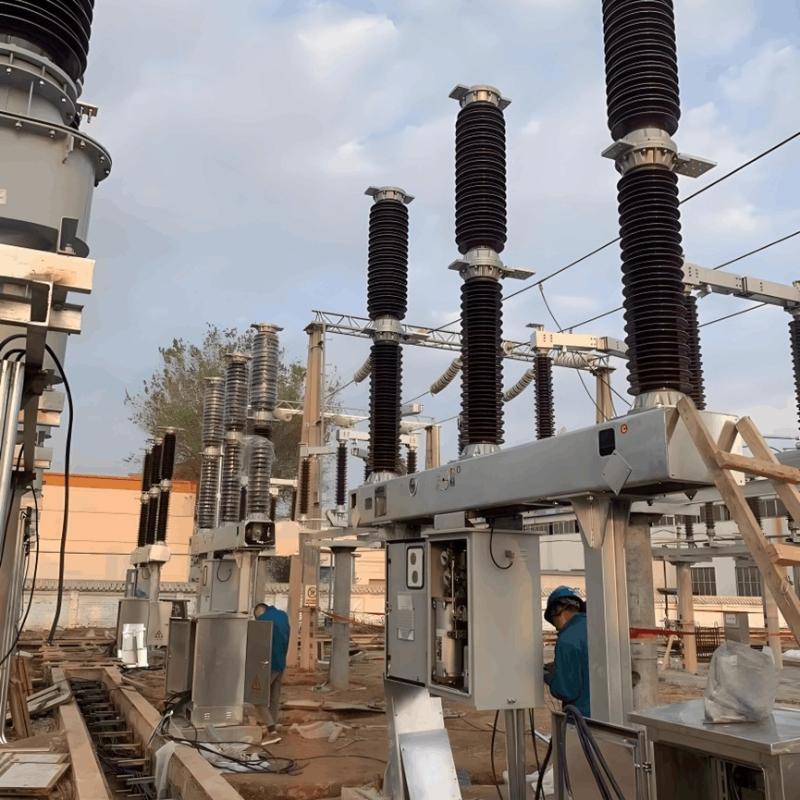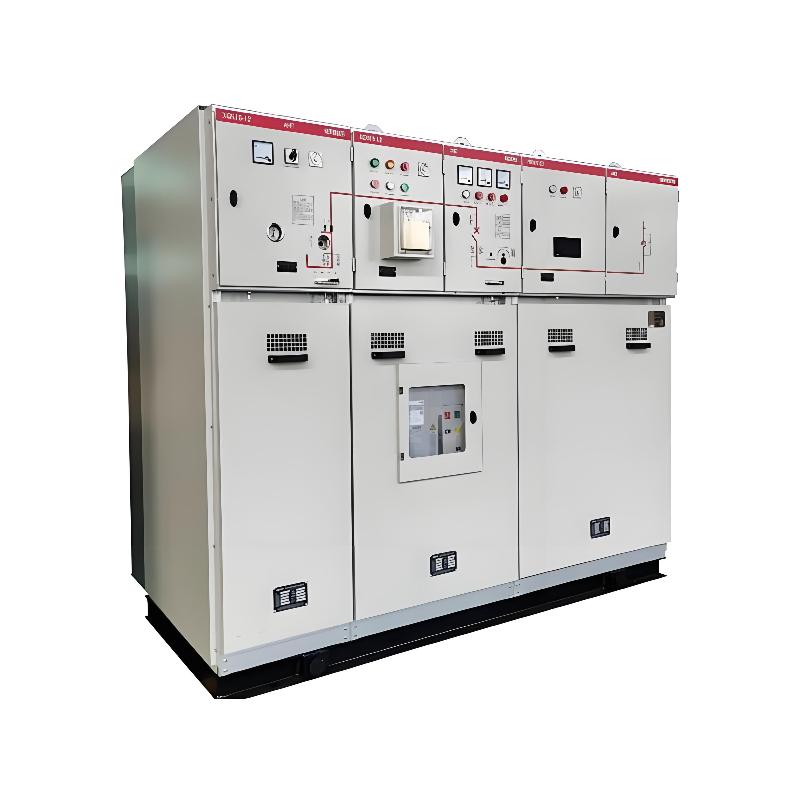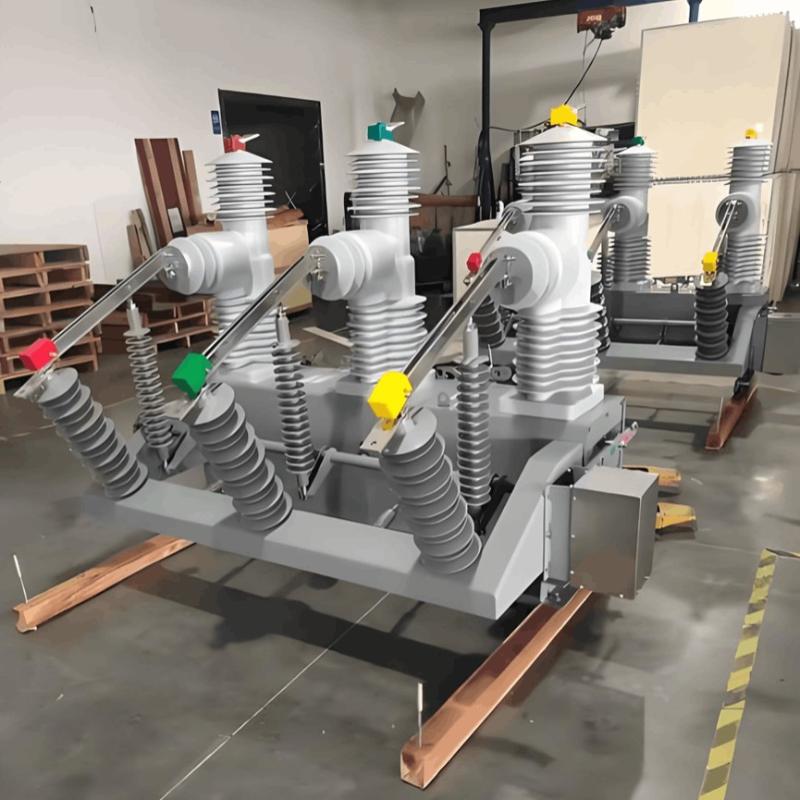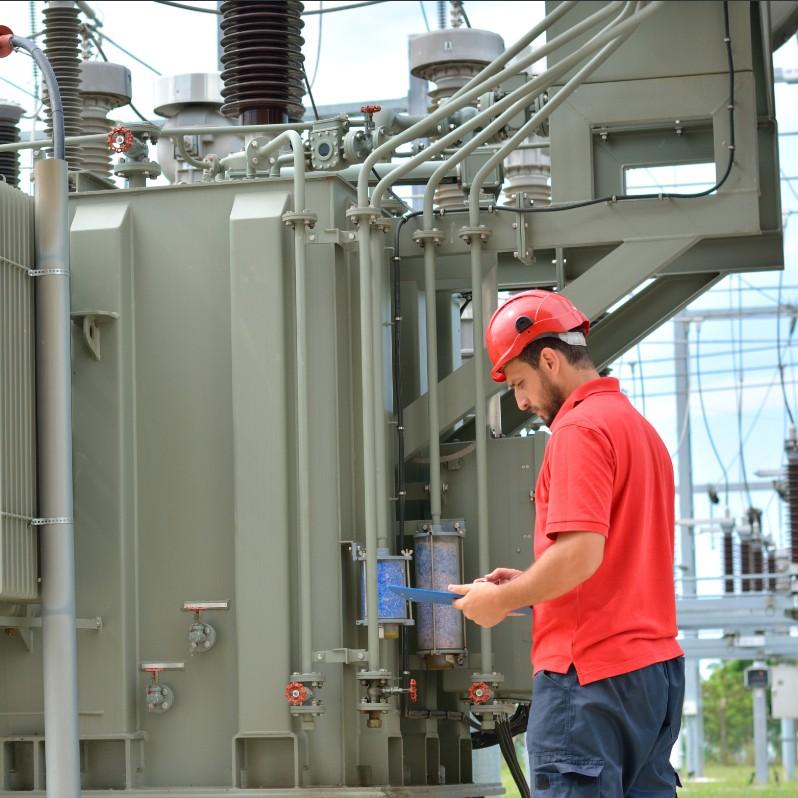1. Introduction
Frequent occurrences of PT burnout and primary - side fuse melting in combined transformers lead to inaccurate energy meter measurement and seriously threaten the safe operation of the power grid. This paper focuses on the repeated PT damage and fuse melting issues of a 35 kV combined transformer, investigates the fault causes, proposes solutions, and recovers the incorrect electricity quantity through correction coefficients. This effectively reduces grid losses and mitigates service risks.
1.1 Introduction to Combined Transformers
In the power system, combined transformers are key components of metering and protection devices. Composed of voltage transformers (PT) and current transformers, they utilize the turn difference between primary and secondary coils to convert large primary - side currents and high voltages into small currents and voltages suitable for secondary instruments and relay protection. Meanwhile, they achieve electrical isolation between the primary and secondary sides to ensure the safety of personnel and equipment on the secondary side.
2. Hazards of Combined Transformer Faults
As a core power measurement device in the power system, the PT of a combined transformer is responsible for converting high - voltage signals to low - voltage signals for metering/protection devices. When the PT is damaged or the high - voltage fuse melts, the hazards are as follows:
Impaired Metering Accuracy : PT damage and fuse melting can cause errors in the electric energy metering system, affecting metering accuracy and triggering disputes between power supply enterprises and users.
Increased Equipment Failure Rate : PT damage may cause system voltage imbalance (over - high/over - low), disrupting system stability; transformer faults can also cause abnormal operation of protection devices, increasing the failure risk of other equipment.
Personal Safety Hazards : Combined transformers are high - voltage equipment. Damage may lead to insulation breakdown and leakage, threatening the personal safety of operation and maintenance personnel.
During actual operation, combined transformers often experience high - voltage fuse melting and PT burnout. The main causes include:
Ferromagnetic Resonance Overvoltage : Ferromagnetic components are linear under rated voltage. During faults, the magnetic circuit saturates, and inductance changes non - linearly. Forming an oscillation loop with system capacitance, it triggers continuous ferromagnetic resonance. The overvoltage causes frequent fusing/burning of PT high - voltage fuses, threatening grid safety.
Excessive Secondary Load : Excessive secondary load causes the transformer to generate much heat with difficult heat dissipation. The internal winding temperature rises too high, eventually burning out the PT.
Primary - Secondary Side Short Circuit : Short circuits on the primary/secondary side of the PT generate large currents, causing high - voltage fuse melting and equipment burnout.
Switching Overvoltage : Improper operation generates overvoltage, causing the PT high - voltage fuse to melt.
Lightning Overvoltage : Direct/inductive lightning overvoltage breaks down the winding insulation, damaging the equipment.
4. Case Analysis
4.1 Basic User Information
On August 23, 2021, an A - phase PT burnout fault occurred in the combined transformer of a 35 kV user, resulting in inaccurate energy meter measurement. In the previous year, this combined transformer had experienced 3 faults. Before January 2021, the user was powered by the 35 kV Shazi Substation with normal metering. After August 2021, the power supply was changed to the 35 kV outgoing line of the 110 kV Zhoujiaba Substation (Zhouwan Line #353 and Zhouri Line #354 dual - circuit power supply). The total line length is about 1.5 km. The 35 kV side is grounded via an arc - suppression coil. The metering points are set at the 2 - circuit 35 kV outgoing lines of the 110 kV Zhoujiaba Substation. The primary wiring is shown in Figure 1.

4.2 Metering Points and Fault Timeline
Both metering points use 35 kV combined transformers, with three - phase three - wire connection and V/V connection for voltage transformers. Among them:
35 kV Zhouri Line #354 (Metering Point 2): Operates normally, no faults;
35 kV Zhouwan Line #353 (Metering Point 1): Frequent faults.
Fault Timeline:
August 23, 2021: First PT burnout, replaced with products from Henan Xinyang Hutong Electric Co., Ltd.;
March 4, 2022: PT burns out again, replaced with combined transformers from Jiangxi Gandi Electric Co., Ltd.;
June 13, 2022: C - phase high - voltage fuse melts, voltage loss;
September 21, 2022: A - phase high - voltage fuse melts, voltage loss again.
4.3 Fault Analysis
When the fault occurred, the user load was light, the secondary wiring was normal, and there was no short circuit. After testing:
The line grounding resistance is compliant, and it belongs to a non - effective grounding system. Grounding faults may easily cause lightning current to fail to discharge, triggering fuse melting;
There was no overvoltage in operation and maintenance, eliminating human factors.
Combined with fault phenomena and common causes, the main cause is determined to be ferromagnetic resonance overvoltage, with specific triggering scenarios:
Triggered by Grounding Faults: When a single - phase grounding occurs on the line, the PT winding and the line - to - ground capacitance form a parallel circuit, meeting the conditions for ferromagnetic resonance. Single - phase grounding causes the voltage of the other two phases to rise, the iron core saturates rapidly, and resonance causes the winding current to surge, fusing the high - voltage fuse; long - term overcurrent will also burn out the PT.
Triggered by Improper Operation: The three - phase load of the system is basically balanced, but during switching operations, the three phases are not synchronized (closing/opening not simultaneous), causing inrush current in the voltage transformer winding and iron core saturation, triggering ferromagnetic resonance overvoltage.
4.4 Solutions
After analyzing the fault causes, the following measures are taken:
Install Harmonic Elimination Devices: Install 1 set of harmonic elimination devices on the 35 kV bus side of the substation to suppress the recurrence of ferromagnetic resonance.
Overvoltage Protection on Secondary Side: Install overvoltage protection devices on the secondary side to resist overvoltage caused by environmental factors and protect the internal insulation of the transformer.
Harmonic Detection and Treatment: Use an on - site electric energy meter calibrator to detect harmonics in the secondary voltage. If there are abnormalities, urge users to treat them to ensure compliance with GB/T 14549 - 1993 "Power Quality - Harmonics in Public Power Grids": Total harmonic distortion rate of 35 kV voltage ≤ 3%, odd - order harmonics ≤ 2.4%, even - order harmonics ≤ 1.2%.
Implementation Effect: After the measures are implemented, the combined transformer operates normally, with no PT burnout or fuse melting faults.
4.5 Electricity Quantity Reconciliation Calculation
The accuracy of electric energy metering is related to the economic interests of both power supply and consumption parties. Faults require electricity quantity reconciliation. This paper takes the third fault as an example and uses the correction coefficient method for calculation:
Principle: Compare the active power during correct metering and incorrect metering to obtain the correction coefficient k, and then calculate the reconciliation electricity quantity \(\Delta W\). Assuming three - phase load balance, the formula for the correction coefficient k is:

(1) Interpretation of Correction Coefficient k
When k > 1, the active power during correct metering is greater than that during incorrect metering. The energy meter under - registers electricity during the fault, and the customer should make up the electricity quantity. When k = 1, the energy meter measures correctly. When 0 < k < 1, the energy meter over - registers electricity, and the electricity quantity should be refunded to the customer. When k < 0, the energy meter reverses, and the customer should make up the electricity quantity.
(2) User - related Metering Parameters
The user's receiving capacity is 2500 kVA, and the metering method is high - supply high - metering (metered by a high - voltage combined metering box). The voltage ratio is 35000 V/100 V, and the current ratio is 50 A/5 A. The comprehensive metering multiplier is 3500. The energy meter capacity is 3×100 V/3×1.5 - 6 A, with an accuracy of 0.5S.
The user's third fault occurred on June 13, 2022, with phase C losing voltage. The power was restored at around 8:00 on August 4, 2022. Time - of - use electricity pricing has been implemented since July 1, 2022. The collected data such as system voltage, power, and power factor are shown in Table 1.

Calculation of Reconciliation Electricity Quantity for the First Stage
As can be seen from Table 1, during the period from June 13, 2022 to June 30, 2022, the voltage of phase A is normal, the average power factor is 0.82, and the element angle is 34°(L). Then the power factor angle φ=4°(L).Assuming that the load is balanced, the correction coefficient is:

The calculation of the reconciliation electricity quantity is as follows:

From Formula (2) and Formula (3), it can be seen that k > 1, meaning the electricity is under - measured, and an additional electricity quantity of 15,134 kWh should be recovered.(2) Calculation of Reconciliation Electricity Quantity for the Second Stage.During the period from July 1, 2022 to August 4, 2022, the voltage of phase A is normal, the average power factor is 0.87, and the element angle is 29°(L). Then the power factor angle φ=0°.Assuming that the load is balanced, the correction coefficient is:

The calculation of the reconciliation electricity quantity is as follows:

From Formula (4) and Formula (5), it can be seen that k > 1, meaning the electricity is under - measured, and an additional electricity quantity of 51,996 kWh should be recovered.Total reconciliation electricity quantity to be recovered:

5. Conclusion
In actual operation, combined transformers often burn out and high - voltage fuses blow, seriously endangering grid safety. Usually, such issues result from resonance overvoltage, along with improper equipment design/selection and parameter mismatches.
When analyzing faults: First, check for transformer defects and verify high - voltage fuse capacity. Second, install proper primary harmonic elimination devices to tackle resonance overvoltage. After an accident, respond promptly and handle correctly to prevent escalation and social impacts. Finally, learn from experience, improve fault - handling skills, and ensure grid safety.






























